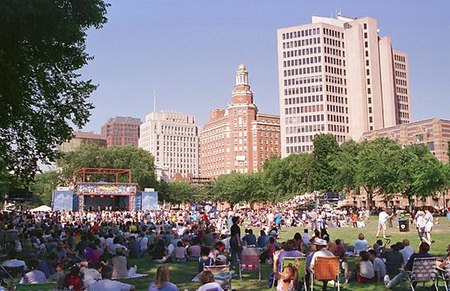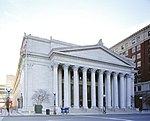International Festival of Arts & Ideas
Culture of New Haven, ConnecticutFestivals in ConnecticutTourist attractions in New Haven, Connecticut

The International Festival of Arts & Ideas is a 15-day festival that takes place in New Haven, Connecticut. The festival presents performing arts, lectures, and conversations that celebrate influential artists and thinkers from around the world. The Festival's free headliner concerts on the New Haven Green attracts thousands of spectators.
Excerpt from the Wikipedia article International Festival of Arts & Ideas (License: CC BY-SA 3.0, Authors, Images).International Festival of Arts & Ideas
Temple Street, New Haven
Geographical coordinates (GPS) Address Nearby Places Show on map
Geographical coordinates (GPS)
| Latitude | Longitude |
|---|---|
| N 41.3077 ° | E -72.9264 ° |
Address
Temple Street 250
06511 New Haven
Connecticut, United States
Open on Google Maps








